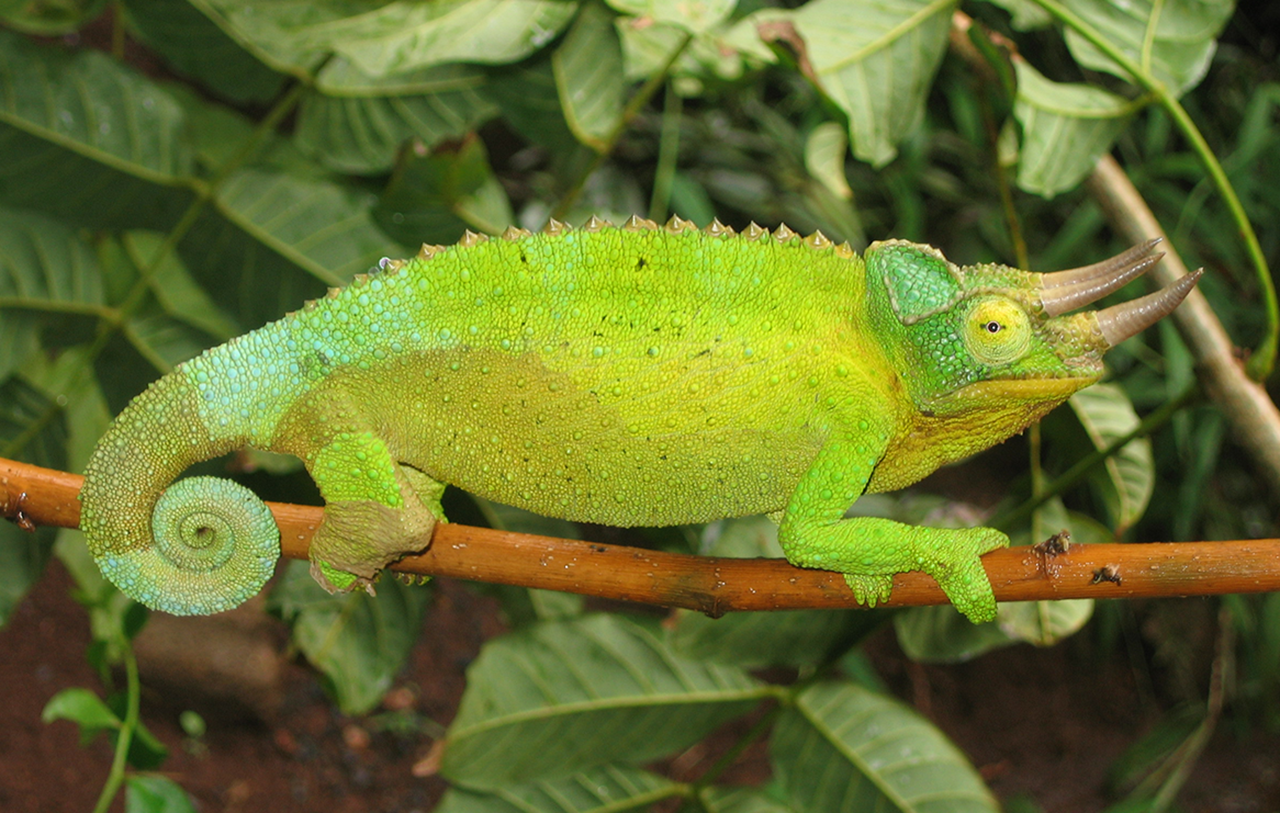Media release
From:
Invasive species are often associated with negative impacts on the native species and environments they colonise. However, these invasions also offer a unique opportunity to further understand the process of evolution in action, as these creatures adapt to their new habitats.
New research published in Science Advances from scientists at Macquarie University in collaboration with the University of the Witwatersrand in South Africa, Hawaii Pacific University in the USA, the Australian National University and the University of Melbourne in Australia found the first evidence of an animal with dynamic colour change developing brighter colour signals in response to natural selection being relaxed.
The best examples of dynamic colour change, whereby colour change occurs over seconds or minutes, are the cephalopods (octopuses, squid) and chameleons.
The researchers took advantage of the particularly unique invasion of the Jackson’s three-horned chameleon in Hawaii in the 1970s. They studied chameleon colour displays and investigated whether social signals have become more conspicuous in Hawaii, where being bright is less costly because predators are few and far between.
“Jackson’s chameleons are native to East Africa, where they are preyed upon by a wide range of mostly bird and snake predators. In Hawaii, however, there are virtually no bird or snake predators to worry about,” says lead author Professor Martin Whiting from the School of Natural Sciences at Macquarie University.
“Bright colours in animals can mean lower survival because predators are expected to weed out the brighter, more conspicuous individuals. In other words, natural selection in action. Alternatively, with less predators lurking around which eases natural selection, the view might be that animals should thrive in their new environments and become brighter,” says Professor Whiting.
The researchers studied chameleons in their native range, close to the slopes of Mountain Kenya, and on the Hawaiian island of Oahu, where they are an invasive species after they were inadvertently introduced through the pet trade.
The focus was on males because they turn lemon yellow when they court females or signal to rivals during contests. Males were either presented (one at a time) with a rival male, a female, or a model (i.e., fake) predator in the form of a snake or bird.
Their colour signals were then measured and analysed using visual modelling which determines how conspicuous their colour signals would be to either another chameleon’s visual system, or that of a potential predator.
The results showed that the invasive Hawaiian chameleons were much brighter than their Kenyan counterparts, making them more visible to potential snake and bird predators. The scientists also found that the Hawaiian chameleons were also more visible against the Hawaiian background vegetation compared to Kenyan backgrounds which indicates what scientists term ‘local adaptation’, where the colour signal has been fine-tuned to its environment to maximise detection by another chameleon.
Overall, these new findings represent an example of what scientists term ‘character release’, when a feature of an animal or plant undergoes rapid, unconstrained change over a short time interval.
“It is also likely that this is an example of rapid evolution because this occurred over roughly 50-60 generations,” says Professor Whiting.
“There are relatively few examples of animals in the wild significantly changing their colour signals in response to natural selection being relaxed, and this is the first case of an animal with dynamic colour change. Regardless of the actual mechanisms bringing about change, this represents a wonderful example of character release of a social signal in an animal with dynamic colour change,” says Professor Whiting.



 Australia; NSW; VIC; ACT
Australia; NSW; VIC; ACT



